How Hindu nationalism went mainstream in Modi’s India
Simply sign up to the Life & Arts myFT Digest -- delivered directly to your inbox.
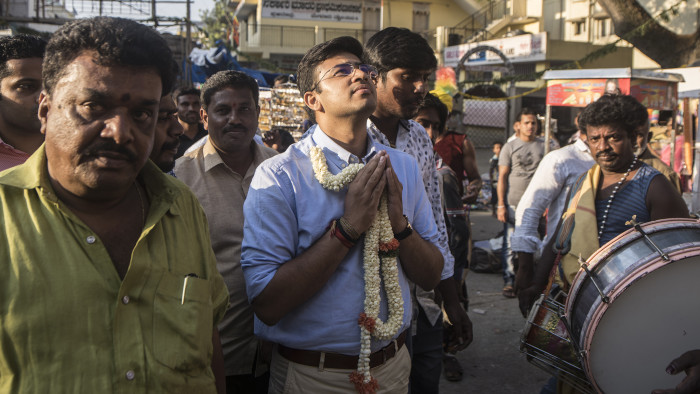
In a land of many pilgrimage sites, the dusty compound of the Ram Birthplace Trust in the city of Ayodhya is an unusual one. Sandstone columns, lintels and other masonry are piled in the sprawling yard like giant, neglected Lego pieces awaiting assembly.
Some are elaborately carved with buxom apsaras, lions or geometric patterns. Others are defaced by graffiti — mainly the words “Jai Sri Ram” (“Victory to Lord Ram”). Many are blackened from long exposure to the summer heat and battering monsoon rains of India’s northern plains.
Amid these piles of construction materials, religious Hindus from across India gaze and take selfies as guides explain how the masonry will be used for a temple dedicated to Lord Ram — a Hindu deity who is revered as the ideal man and is believed to have been born in Ayodhya.
“All we need is 24 hours to build the temple,” local guide Arjun Pandey explains to a small clutch of visitors, who reverently study a small, Plexiglas-encased model of the planned temple. Pandey prods his charges to chant “Jai Sri Ram” and the words briefly reverberate before the tour moves on.
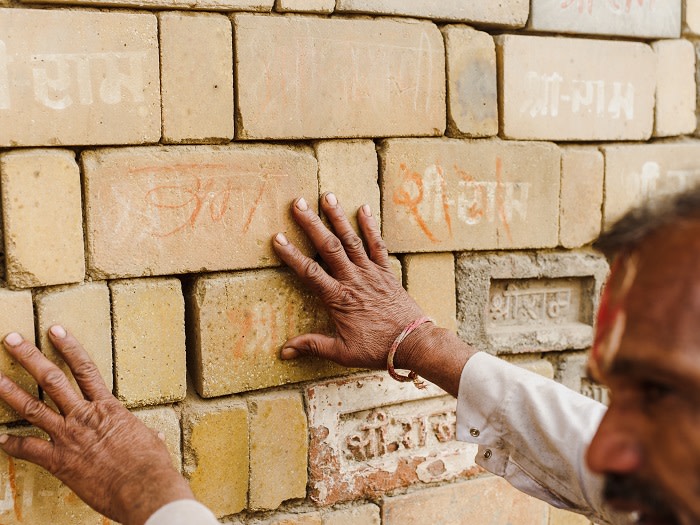
The visitors are led to a surreal image of an imagined temple hanging on a wall. It is, the guide asserts, a depiction of the spectacular shrine that supposedly stood upon Lord Ram’s birthplace until Babur, the 16th-century founder of the Mughal dynasty and a Muslim, ordered it destroyed.
It is this centuries-old historical outrage — for which archaeological and historical evidence is scant — that devout Hindus want to redress by building a new temple. “Nearly 80 per cent of the work is done,” says Pandey, walking past piles of bricks inscribed “Sri Ram” that have been donated by Hindus around the world. “We’ve had no government help. Faithful Hindu followers have put this together.”
All the sandstone pillars in the yard are numbered. The idea is that they can be quickly fitted together through an ingenious “locking system” and then the longed-for Ram Janmabhoomi temple will finally be complete. “All we need,” the guide reiterates as the visitors depart, “is 24 hours.”
When that day may come is an open question, as Lord Ram’s birthplace is the most bitterly contested site in all of India. While devout Hindus consider Ayodhya the location of a historic, Mughal-era injustice that demands rectification, for many Indians — including, but not only, the country’s estimated 190-million-strong Muslim minority — it is the site of a far more recent wound.
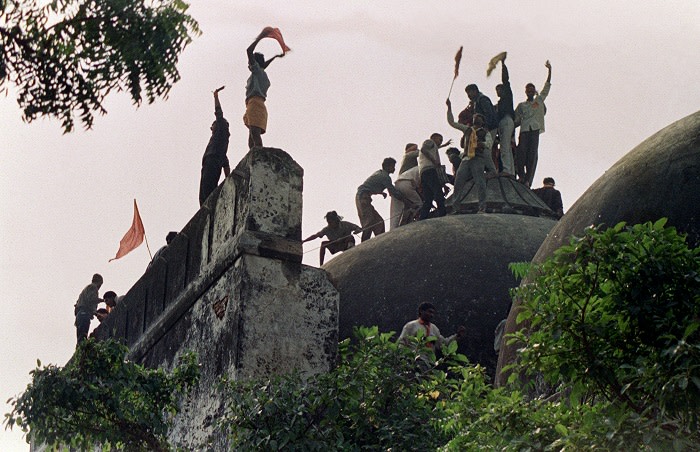
On December 6 1992, in a frenzy of destruction over a few hours, rightwing Hindu activists used axes, hammers and other tools to demolish the 16th-century Babri Masjid, or Babur’s Mosque, which they claimed had been built on top of Lord Ram’s sacred birthplace.
India’s Supreme Court is now hearing a long-running legal case over the future of the site. At present it is surrounded by barbed wire and armed military personnel, though pilgrims can approach for a brief glimpse of the small Lord Ram idol that rests there.
The attack on the Babri Masjid almost three decades ago was not merely the destruction of a historic building. It was an assault on the idea of an inclusive, pluralistic India, as envisaged by Mahatma Gandhi, leader of India’s freedom movement, and his political heir Jawaharlal Nehru, the first post-independence prime minister.
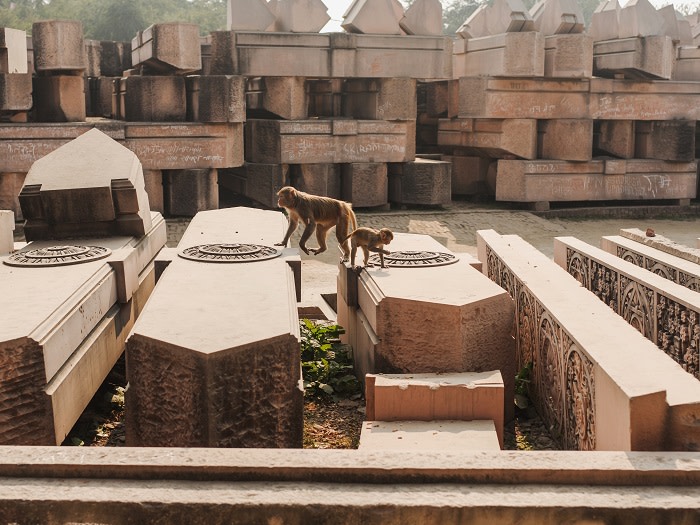
In their conception of the nation, which was enshrined in India’s liberal constitution adopted in 1950 and set the tone of public life for decades after the end of colonial rule, India should be a secular state that belongs equally to all members of its complex multifaith society — whether from the large heterogeneous Hindu majority or smaller communities that follow the Semitic religions of Islam and Christianity, which have also flourished for centuries in the subcontinent.
But the militant Hindus who tore down the Babri Masjid, and their powerful political patrons from the Bharatiya Janata party (BJP) and its parent organisation the Rashtriya Swayamsevak Sangh (RSS), saw things differently. Influenced by Hindutva — a word that literally means Hindu-ness but has come to stand for the Hindu nationalist political ideology — they believe that India belongs first and foremost to Hindus.
First articulated in Vinayak Damodar Savarkar’s seminal 1923 treatise “Hindutva: Who is a Hindu?”, this world view holds that followers of Islam and Christianity cannot claim equal membership in the Indian nation, and indeed pose an existential threat to it, as their sacred sites lie elsewhere.

“Their Holyland is far off in Arabia or Palestine,” Savarkar wrote in what became the de facto manifesto of the RSS, which was established two years later. “Their mythology and Godmen, ideas and heroes are not the children of this soil. Consequently their names and their outlook smack of foreign origin. Their love is divided.”
For nearly a century, this profound ideological battle over the idea of India has simmered under the surface of society, pitting an inclusive vision of a pluralistic, multifaith nation against the Hindu majoritarianism of the RSS, which says Hindus should have primacy in Indian society.
The January 1948 assassination of Mahatma Gandhi by Nathuram Godse — a rightwing Hindu nationalist who blamed Gandhi for capitulating to Muslim pressure and allowing the partition of India to create Muslim-majority Pakistan — cast a long shadow over the RSS, which was briefly banned and struggled for decades to regain public legitimacy.
But today, the debate is once again intensifying, as Prime Minister Narendra Modi, a dedicated RSS activist since his youth, seeks a second five-year mandate from India’s estimated 900 million eligible voters.
The world’s biggest election began last month and is taking place over six weeks so security forces can ensure a free and fair vote. Indian elections are notoriously unpredictable but most expect Modi’s BJP will return to power, though it is likely to be more reliant on coalition partners than in 2014.
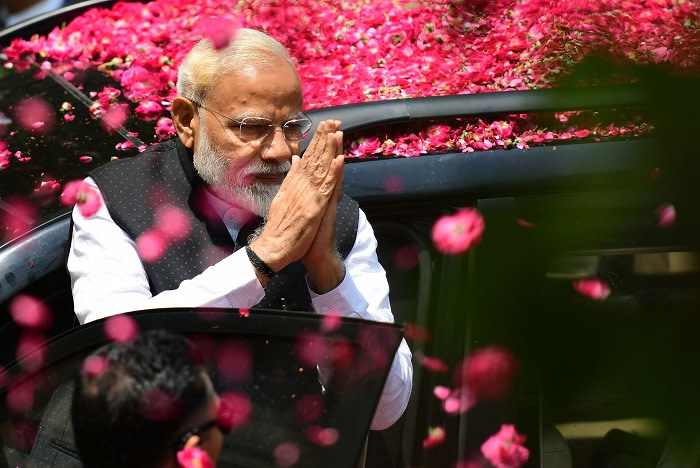
Like Modi, Amit Shah, president of the ruling BJP and the prime minister’s most trusted adviser, and many other BJP leaders are committed, life-long RSS activists, sworn to protect the Hindu nation. Other key party figures, such as Yogi Adityanath, the rightwing Hindu monk and militia leader who the BJP installed as Uttar Pradesh’s chief minister in 2017, also subscribe to its core ideals.
Modi’s own reputation was forged in 2002 when he was chief minister of Gujarat state, and a train fire killed 59 Hindu pilgrims returning from Ayodhya. He quickly branded the fire an act of “pre-planned . . . inhuman terrorism”.
Gujarat then erupted in savage communal riots, later described by many scholars as an anti-Muslim pogrom, in which at least 1,000 people, mainly Muslims, were killed. Modi was perceived as doing little to stop the bloodletting, which the RSS later justified as a reaction to the provocation of Hindus. Afterwards, Modi’s supporters feted him as a Hindu Hriday Samrat (Emperor of Hindu Hearts).
![Amit Shah , National President of BJP addressing a press conference on April 22,2019 in Kolkata,India. Amit Shah said, "Sadhvi Pragya ko jhoothe case me fansaya gaya [Sadhvi Pragya was framed on a false case]." He said in fact questions should be asked on the Samjhauta blast case. "The real question is where are the culprits of the Samjhauta blast? Who are they? West Bengal Chief Minister Mamata Banerjee should respond to all these questions," Amit Shah said. Intensifying his attack on Mamata Banerjee, Amit Shah dared West Bengal chief minister to clarify her stand on Omar Abdullah's demand for a separate prime minister, Article 370 and Article 35A. "The BJP is being called a terrorist organisation. I dare Mamata Banerjee to clarify her stand on Articles 370 and 35A," he said. (Photo by Debajyoti Chakraborty/NurPhoto via Getty Images)](https://www-ft-com.ezproxy.cul.columbia.edu/__origami/service/image/v2/images/raw/http%3A%2F%2Fcom.ft.imagepublish.upp-prod-eu.s3.amazonaws.com%2F5d5cde10-7128-11e9-bbfb-5c68069fbd15?source=next-article&fit=scale-down&quality=highest&width=700&dpr=1)
Yet during his first prime ministerial campaign in 2014, Modi played down the Hindutva aspect of his political persona. Instead, under the upbeat slogan “Sabka Saath, Sabka Vikas” (All Together, Development for All), he offered a young, aspirational population a vision of economic modernisation, accelerated growth and the creation of millions of jobs, promising that “good days are coming”. He was rewarded with a decisive victory, with the BJP securing the first single-party majority in the Indian parliament in three decades.
For many Muslims — who account for about 14 per cent of India’s population — that optimistic promise rings hollow. With the gradual rise of the BJP, Muslims have been marginalised politically and pushed out of public institutions such as the police and judiciary. Muslims hold just 4 per cent of seats in the outgoing parliament, down from a peak of 9.6 per cent in 1980. During Modi’s first term, expressions of anti-Muslim hatred have grown more common — and acceptable — in public life.
One symptom of this is a growing number of lynchings of Muslims in relation to cows — animals considered sacred by orthodox Hindus. In September 2015, a Muslim labourer, Mohammad Akhlaq, was murdered by his neighbours in a village outside New Delhi on suspicion of eating beef. Afterwards, officials seized meat samples from the victim’s home to determine if it was beef, which extremists argued would be a mitigating factor in his killing.
Overall, according to Human Rights Watch, between May 2015 and December 2018, 280 people were injured in attacks carried out by vigilantes acting in the name of protecting cows, and 44 people — 36 of them Muslims — were killed. Even as these attacks — often carried out in public and some recorded on video — have drawn national headlines, Modi has said little to condemn or discourage the violence.
Some BJP politicians have even intervened on behalf of those accused of such crimes, whether by paying for their lawyers or defending their actions. “We won’t remain silent if somebody tries to kill our mother — we are ready to kill and be killed,” one BJP parliamentarian commented on Akhlaq’s murder. Several of those accused of that murder, now free on bail, were seated prominently at a recent election rally of Yogi Adityanath.
“If you analyse the past five years, the lynching, the threats — they point to the normalisation of violence against Muslims,” says Ali Khan Mahmudabad, a spokesman for the Uttar Pradesh-based Samajwadi party, which counts Muslims among its supporters. “Distrust of Muslims has been mainstreamed, and that has led to this fear psychosis.”
Even the most educated, secular and assimilated Muslims are affected by the polarising public discourse. “Muslims are seen now only through their Muslim lens. They are no longer athletes or chefs or professors. The politics of today privileges their Muslim identity,” Mahmudabad says. “It’s very clear: as a Muslim now, you are very careful of where you move, what time you move, who you move with, what you wear and what you are carrying with you.”
Modi’s re-election campaign, carried out in the shadow of a brief military showdown with neighbouring Pakistan, has taken on a dark tone. With his government’s patchy economic record making it tough to campaign on hopes of a brighter future as in 2014, the prime minister and other BJP “star campaigners” are running on an agenda of national security, with themes that seem intended to inflame Hindu anxieties.
In rally after rally, BJP campaigners have focused on the dangers posed by terrorism from Muslim-majority Pakistan and of illegal Muslim immigrants from Bangladesh — who Amit Shah has described as “infiltrators” and “termites” that must be thrown out.
The BJP also depicts its arch-rival, the secular Congress party led by Jawaharlal Nehru’s great-grandson Rahul Gandhi, and other opposition parties as pandering to the Muslim minority, pushing policies that will directly benefit Pakistan.
“This election is a crossroads not just for majoritarianism — which has always been a kind of undercurrent in the political idiom — but the idea that you search for enemies that make the nation insecure,” says Pratap Bhanu Mehta, a political scientist and vice-chancellor of Ashoka University.
“For nationalism to work as a theme, you have to run this idea that the nation is fundamentally insecure, and that it requires somebody strong to deal with it. This insecurity is said to come from external enemies like Pakistan and China. But what is much more ominous is the internal enemies theme. A range of people who have, broadly speaking, been identified with secularism and the Congress are also being presented as an antinational threat.”
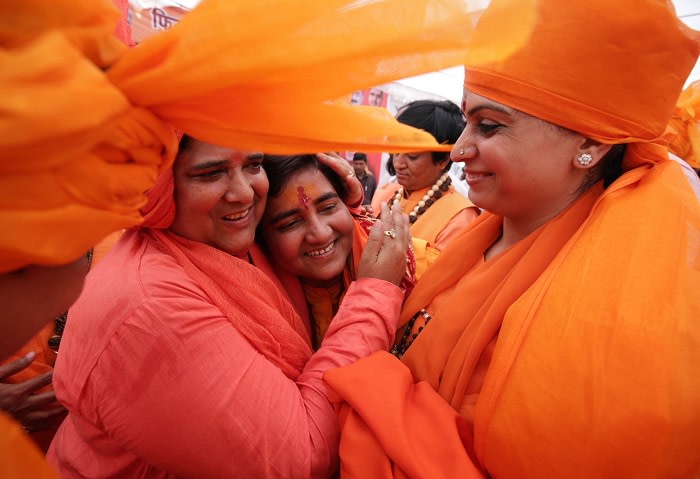
Among the BJP’s first-time parliamentary candidates is a Hindu extremist called Pragya Singh Thakur, who wears the saffron garb of a Hindu holy woman but has been criminally charged for her alleged involvement in a 2008 bomb attack on a Muslim burial ground, which killed at least six people and injured 100 others.
After about eight years in jail awaiting trial, she was freed on bail on health grounds in 2017, months after a former public prosecutor complained of pressure from the National Investigation Agency to “go soft” on the case after Modi’s election.
The prime minister has defended the controversial candidacy of Thakur, who he calls a saint, saying it was a rebuke to those who “defamed a 5,000-year-old peaceful civilisation” by suggesting a Hindu could also be a terrorist.
It is in this context that many Indians see the 2019 election as a critical turning point that could have profound repercussions on the fabric of Indian society. “If [Modi] wins again,” says Mehta, “it will really be the emphatic political triumph of Hindu nationalism. It will be a mandate to finish the job that the RSS wants finished.”
Not far from the work-yard of the Ram Birthplace Trust in Ayodhya is a 13-acre complex where the World Hindu Council runs guest houses and a Vedic school, focused on imparting the spiritual insights of the ancient Sanskrit Vedas to children. It is also home to Triloki Nath Pande, a 64-year-old farmer’s son, who has dedicated his life to the RSS and its quest to build the Ram Temple.
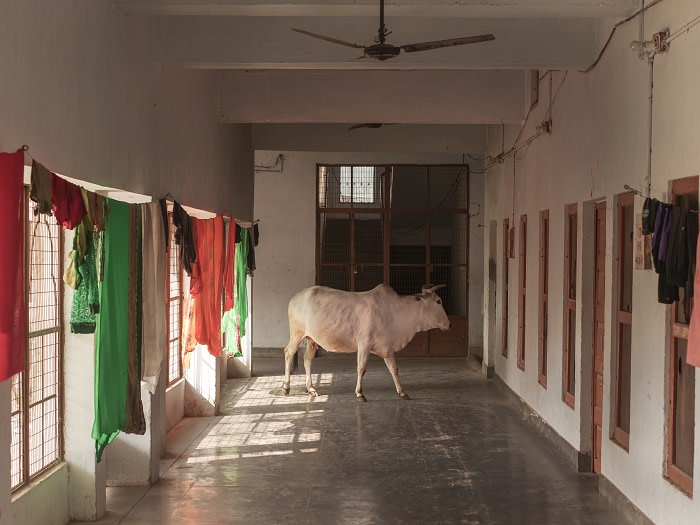
Pande first encountered the RSS in the 1960s as a schoolboy in a small town in Uttar Pradesh, where the organisation’s dawn drills and stick-fighting sessions — intended to strengthen the self-defence capacities of Hindus once stereotyped by the British as weak and effete — were popular among bored youth.
But amid the poverty of post-independence India, the young man was also deeply impressed by the RSS leaders, who explained how their land — once so prosperous it was known as “the golden bird” — had fallen so far, due to a population divided by language, caste and creed.
He was spellbound by the talk of restoring the glory of India’s lost golden age, before Arabian and central Asian invaders began setting up kingdoms in India in the 13th century — the start of what the RSS today describes as “1,000 years of slavery”, when Hindus lived under the rule of Muslims, including the Mughal dynasty, and then under the British.
“Foreigners came into the country because of constant internal disputes,” Pande explains, as a pair of cows amble by. “Because of their personal egos, and their fight for supremacy, they sacrificed the interests of the nation.”
After training as a teacher, Pande became a full-time RSS organiser. In 1982, he was given the task of launching a “Save the Culture” campaign to prevent Hindus from converting to Christianity or Islam, and to encourage followers of Semitic religions to “return” to the Hinduism of their ancestors.
Then, in 1984, Hindu nationalists hit on a new strategy to restore Hindu pride: to build grand new temples at three sites sacred to Hindus — Ayodhya, Varanasi and Mathura — where mosques then stood. “These three mosques are mocking us,” Pande remembers RSS workers being told at the time. “Those temples have to be restored.”
In October 1984, about 60,000 people marched from Uttar Pradesh’s state capital Lucknow to Ayodhya, where they pledged to “liberate” the site of Lord Ram’s birth. And so began the movement that saw Pande and other RSS volunteers spend years drumming up support to replace the mosque with a grand Ram temple.
Those efforts culminated in the 1992 demolition of the Babri mosque, when a rally of 150,000 BJP and RSS supporters at Ayodhya turned violent. The destruction shocked and dismayed India’s Muslim communities, igniting communal riots that claimed about 2,000 lives.
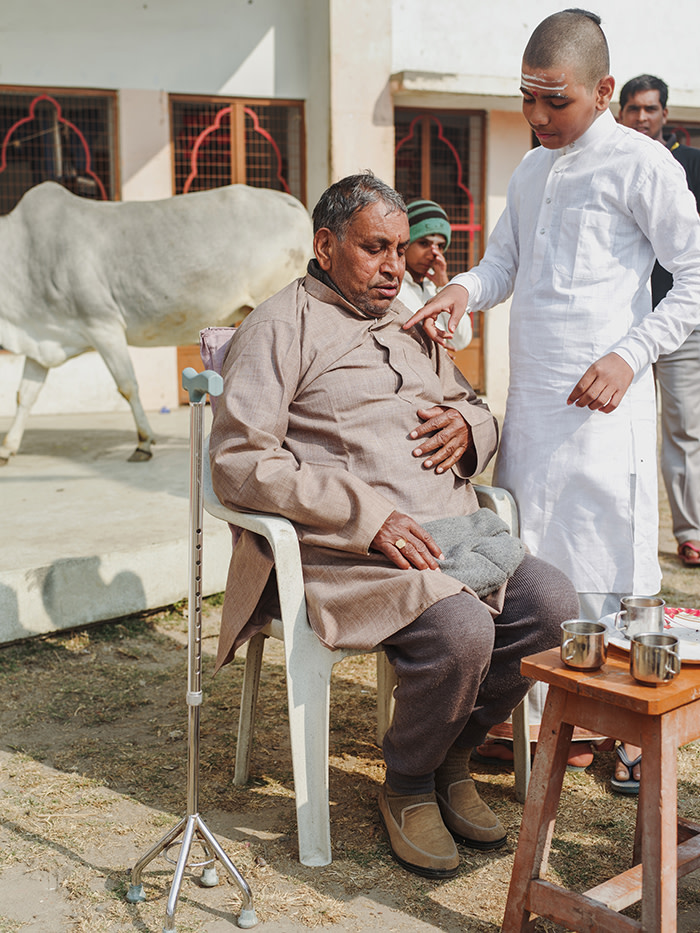
As he witnessed the destruction, Pande, who was helping supply food to the crowds, felt a surge of triumph. “I was overwhelmed with joy,” he says. “It was very glorious. The symbol of slavery had been erased.” He is disappointed that the Ram temple has yet to be built but believes it eventually will be — regardless of the Supreme Court’s verdict.
If the judges do not clear the legal hurdles, he thinks a BJP government will issue an emergency ordinance allowing work to proceed. When that day comes, he says, Muslims “will have to decide whether they stand with Babur or with Ram. One is a deity — our ideal of the nation. The other is an invader, an enemy.”
On a recent evening in Bangalore, a hub of India’s IT industry, nearly 200 educated middle-class professionals — IT engineers, corporate managers, bankers and consultants — gathered in a small screening room for the launch of a locally made music video, “Jhonka Hawa Ka” (A Breath of Fresh Air), dedicated to Modi.
The event has the feeling of a religious revival meeting as audience members speak out in praise of the prime minister. “We have to follow the leader,” says one man. “The leader has come and we have to follow the leader faithfully.” Another chimes in: “Finally, after so long, we can voice our Hindutva. Earlier we didn’t have direction. But now the breeze is carrying us.”
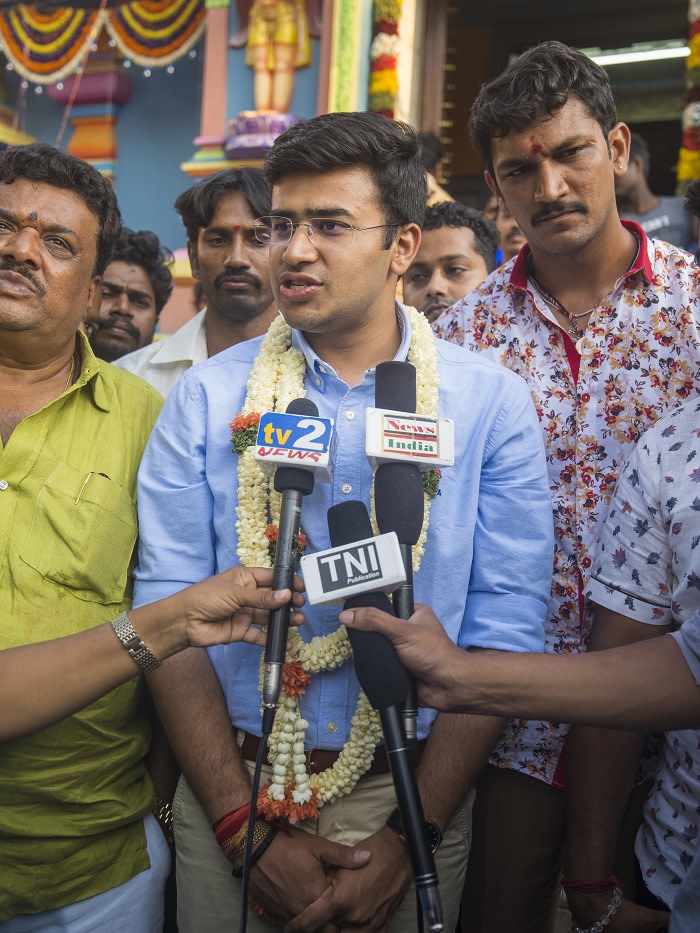
Once the function is over, audience members surround a 28-year-old baby-faced lawyer, Tejasvi Surya, the BJP’s youngest parliamentary candidate and a rising political star. Dressed in khaki trousers and a navy shirt, with gleaming loafers, Surya is the new, tech-savvy, English-speaking face of Hindu nationalism. He was thrust into the public spotlight when he called India’s parliamentary election “a test of the common Indian’s patriotism”.
“If you are with Modi, you are with India, and if you are not with Modi, you are anti-India,” he thunders in a video watched 80,000 times on YouTube and widely circulated on WhatsApp. Weeks after this speech went viral, the young firebrand was tapped by Modi and Shah to run for parliament from Bangalore.
He is using his oratorical skills to promote Hindutva among young educated professionals who yearn for respect in a world where they feel India and its spiritual practices are often viewed with condescension.
“In my visits and interactions with foreigners — even young people of my age — the first question a foreigner asks a Hindu is ‘you have such a rigid and inhuman caste system,’” Surya tells me. “The second is, ‘Why do you guys pray to the cow?’ and ‘Why do you have so many gods?’ And the third is curry. Caste, cows and curry . . . people must learn our culture in a less prejudicial manner,” he says.
Pande’s generation of Hindu nationalists were focused primarily on redressing what they saw as historic wrongs, including religious conversions and the desecration of sacred Hindu sites by the foreign invaders who once ruled their motherland.
Surya represents a new generation of millennial nationalists, whose strongest grievances are against the modern Indian state, shaped by Nehru and his political heirs in the Congress party and other secular parties. Along with old-fashioned marches and protests, this generation of Hindutva warriors relies heavily on the power of social media — including YouTube and WhatsApp — to broadcast its ideas to vast audiences, and generate support for its vision of a more muscular Hindu state.
Describing Hindutva as the “political skeleton essential to practise Hinduism”, Surya believes the Indian state should actively protect Hindu society from threatening forces, including Islamic fundamentalism, Christian missionaries, efforts to erode the Hindu majority and neighbouring Pakistan.
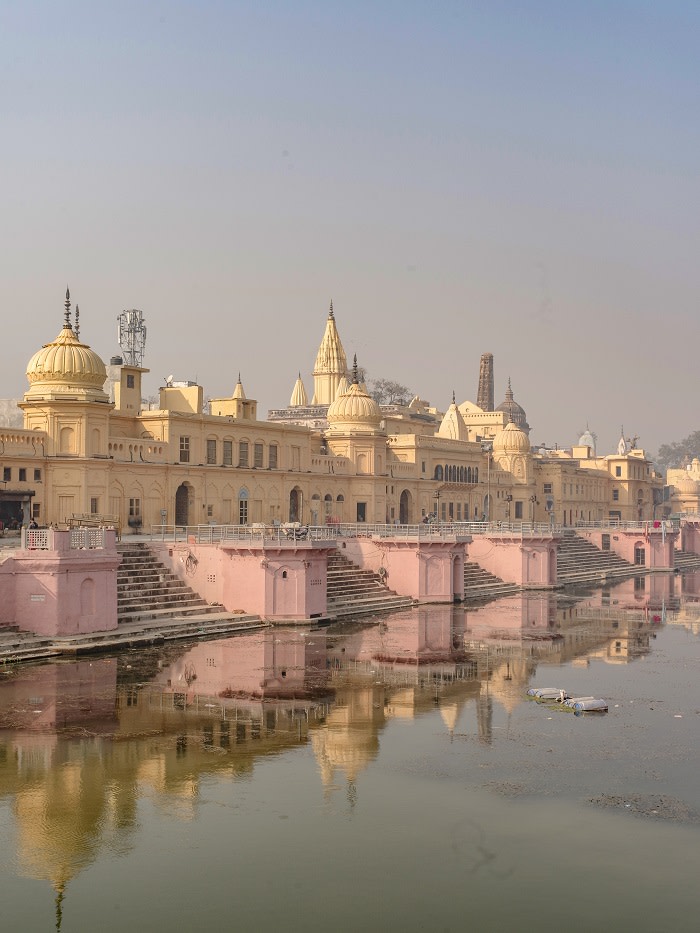
“As a civilisation, the Hindu society must be aware of the threats that it faces from foreign ideas or agencies or interests from within and outside, which may spoil or hurt the core philosophical freedom the society enjoys,” he says, adding that the state should “actively promote and protect the native cultural and spiritual tradition of our land”, such as incorporating more Indic texts and writers into the school curriculum.
He believes that, since independence, the Indian state “in its quest to be secular, became anti-Hindu in many respects”. India grants some privileges to religious minorities — specifically the autonomy to run their own educational and religious institutions free from state interference — that Hindus do not enjoy. “We need a truly equal country where there is no discrimination between the minority and the majority.”
Muslims, however, must be willing to “compromise to live together” with Hindus by forgoing beef out of respect for majority sensibilities, he says. “There are certain compromises that one makes in the need of the social contract, respecting majority traditions at the state level.”
Surya’s own political journey began in his youth, when he attended weekend religious classes at the local Ramakrishna Mission, which promotes the ideas of Swami Vivekananda, a 19th-century intellectual and monk feted both at home and in the west for challenging colonial-era stereotypes about Hinduism.
“The more I read him, the more I realised how little I knew of the vastness and grandness in Hinduism,” Surya says. His thirst for greater knowledge of Hindu tradition and ideas led him to the National Uplift Library, run by the RSS.
Studying law in Bangalore, he was active in the RSS student wing. In 2012, he led hundreds of fellow students on a 2,000km trip from Bangalore to Kishanganj in West Bengal, where they joined a huge march demanding the expulsion of illegal immigrants from neighbouring Bangladesh.
“Any self-respecting sovereign state must protect its citizens and ensure there are no illegal immigrants in its territory,” he tells me. “Infiltrators — illegal immigrants — must be detected, deported and deleted from whatever government rolls they have fraudulently gotten inside. It will be a very important priority of the government in the coming days.”
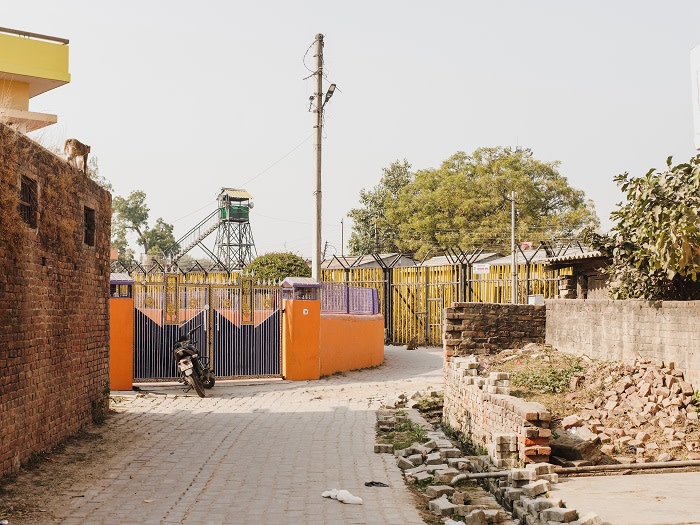
After graduating in 2013, Surya spent a year writing for conservative publications and volunteering for Modi’s first prime-ministerial campaign. He then began practising law and was appointed to a leadership position in the BJP youth wing and its social media team.
In 2016, he spearheaded protests against plans by the then Congress government in the state of Karnataka to hold public celebrations to mark the birthday of Tipu Sultan, an 18th-century south Indian Muslim ruler who died in a 1799 battle against British East India Company troops.
Often described as India’s “first freedom fighter”, Tipu Sultan was lionised in a 1990s television series, The Sword of Tipu Sultan, based on a best-selling novel that portrayed him as a valiant Indian resisting colonial aggression.
But, citing a Koranic inscription on the handle of Tipu Sultan’s sword, Surya claims the man widely eulogised as the “Tiger of Mysore” was an Islamic fanatic who persecuted Hindus. The proposed birthday holiday, he says, was yet another attempt at the Congress party’s “Muslim appeasement”.
Like his ideological mentors, Surya insists that Indian students should be taught the country’s “unadulterated history”, which he believes is replete with Hindu suffering and victimisation by Muslim rulers.
It is in this context, Surya says, that rebuilding a Ram Temple at Ayodhya, as the BJP says it will do, becomes so important. Though Surya has never been to Ram’s birthplace himself, he says the mosque standing at the site was a reminder of “historical domination and subjugation. The need to restore and rebuild the temple at that very place is the quest of a civilisation to heal its wounds.”
On May 1, as India’s marathon election began to enter its final phase, Modi held a large campaign rally in Ayodhya. He did not get close to the disputed site, to which access remains highly restricted — his speech was held about 25km away. But he began by telling his supporters that he was on “Lord Ram’s turf” and ended his rally by crying “Jai Shri Ram”.
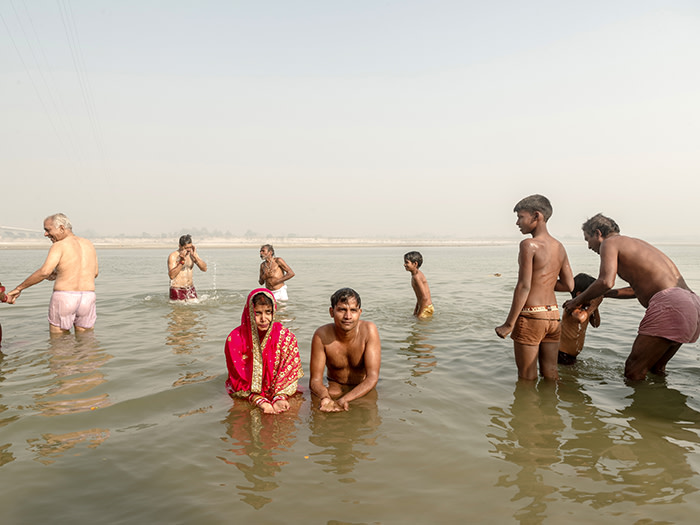
Many Indian liberals supported Modi in 2014, hoping for decisive economic reform while turning a blind eye to his Hindutva agenda. This time round, there can be no illusions that a vote for the BJP is simply a vote for faster economic growth. Along with the dream of a developed, prosperous India, the party seems to be grooming voters for the sociopolitical ascendance of the militant Hindu nationalism that cheered the destruction of the Babri mosque.
The mainstreaming of Hindutva ideology under Modi’s leadership has already changed India’s political climate in fundamental ways. Now the country faces an existential question, according to Shashi Tharoor, Congress party leader and author of the book Why I Am a Hindu.
“Is India going to be the India of the freedom struggle and the constitution, which sees every Indian as equal irrespective of their religion, their region, their language, their caste or any other marker of their identity from birth?” he asks. “Or is India going to be redefined as an ethno-religious state in which Hindus will be seen as the constituent elements of the nation, and all other minorities will be here on sufferance, as guests or interlopers?”
Amy Kazmin is the FT’s South Asia bureau chief. Additional reporting by Jyotsna Singh
Follow @FTMag on Twitter to find out about our latest stories first. Subscribe to FT Life on YouTube for the latest FT Weekend videos
Letter in response to this article:
The Indian public have always known who they are / From R Vijayaraghavan, San Jose, CA, US
Comments